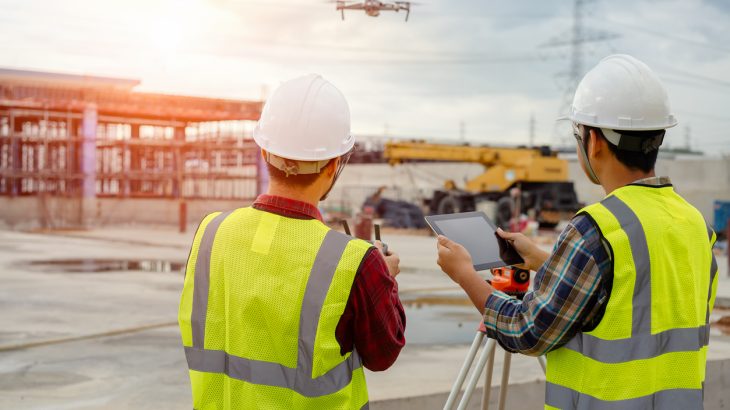The global health crisis had a significant impact on the business sector and on the economy. While some businesses were allowed to operate during the lockdown, there was a halt in construction projects as the construction industry was not listed as essential. There’s no denying that the COVID-19 pandemic has had varying degrees of influence on the construction industry. During the time of distress, many construction companies have experienced financial difficulties, thus laying off most of their staff, which further impacted the industry. However, according to some experts, in today’s globalized world, new technologies like drones can save and prevent the construction industry from drowning.
As per a McKinsey study, due to the current industry struggles, most construction projects are taking 10-20 % longer than expected to complete. But, if the industry embraces the use of unmanned aerial vehicles (commonly known as “drones”), it will be able to overcome these struggles. Let’s see how.
Topographic Mapping and Land Surveys
 In the construction industry, topographic maps are one the most useful tools. They are a close and graphical representation of the earth’s surface –like a 2D version of the 3D world – and create what is called informative mapping which includes geodesic maps, geologic maps, road maps and wilderness maps. Topography describes the shape of land, even with the hills and valleys and all kinds of differences in elevation. And, it also shows drainage features and the location of water bodies.
In the construction industry, topographic maps are one the most useful tools. They are a close and graphical representation of the earth’s surface –like a 2D version of the 3D world – and create what is called informative mapping which includes geodesic maps, geologic maps, road maps and wilderness maps. Topography describes the shape of land, even with the hills and valleys and all kinds of differences in elevation. And, it also shows drainage features and the location of water bodies.
While constructing buildings, topography plays a crucial role in deciding the building’s location, nature conservation planning and other such important aspects of construction and engineering. This detailed record of a land area is often used to perform flood analyzes, since natural water flow follows the terrain’s gradient. Topographical maps are also consulted and integrated into the design and planning of any construction project.
Recently, there has been a major advancement in this area where construction site managers have started exploiting the use of drones. Instead of relying on conventional methods, site managers are using drones to obtain sharp and more accurate images of construction sites. With a single drone flight, hundreds of detailed images can be produced, which significantly reduces the time spent visualizing a site’s topography. These images can be obtained within just a few hours and high-resolution images can even be used to create 3D models, which consequently allow the construction crew to overcome any challenges that may arise during the preconstruction process.
The use of drones in surveying land has grown so much in popularity that people have replaced “bird’s-eye view” with “drone’s-eye view.”
“With an airplane-like design, fixed-wing drones can glide on a set path and reach higher altitudes, making them efficient for mapping topography and surveying greater distances” (Big Rentz).
Track Tools and Equipment
 Accidental asset loss is quite prevalent in the construction industry. In fact, as per the National Equipment Register (NER), losing equipment and tools to theft can cost the construction sector around $1 billion per year.
Accidental asset loss is quite prevalent in the construction industry. In fact, as per the National Equipment Register (NER), losing equipment and tools to theft can cost the construction sector around $1 billion per year.
Pens, sticky notes, paper clips and chairs are some of the most common stolen office supplies. While these can be replaced, high-value assets and equipment used in the construction industry cannot be easily replaced. Loss of equipment can not only affect the business, but it also costs additional time and money required to replace it.
Over time, several cost-effective solutions have been proposed to tackle this problem. Traditional book records have been kept while some construction companies preferred the use of new apps ad technological platforms to track their equipment. However, many project managers have started relying on drones for the tracking of their machines and equipment.
With a drone, a site manager can easily and quickly check the location of an equipment and also supervise its secure storage.
To help you counter the impacts of the COVID-19 outbreak on your construction company, we are coming up with a third article.



















